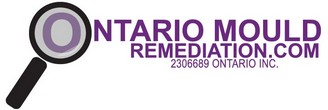Mold Stain Removal with Lemon Juice
HOW TO REMOVE MOLD STAINS WITH LEON JUICE and SALT
Mold stains your tile, grout, shower curtains and other fabrics can be a real eye sore. They can also give off a milder like smell that will drive you insane. Fear not though. There is a quick, all natural mold stain removal solution right in your own home.
REMOVAL DIRECTIONS
1) Start by preparing the infected room or area. This means placing plastic wrap over top of nearby objects (possessions, walls, floors and ceilings) to keep mold spores from infecting other areas of your home. You also want to wear protective eye wear, latex gloves and a HEPA approved breathing mask.
2) Next, mix a solution that is 1 cup lemon juice with 1 tablespoon of salt.
3) Once you have your solution ready, use a spray bottle to dampen the moldy area. Let the solution sit for at least a few minutes so that it can penetrate the mold.
NOTE: Do not wet a sponge or towel with your solution and wipe the mold while it is dry. This can result in mold spores becoming airborne where they will rest and grow on other surfaces.
4) Next you will take a sponge or towel (one that you can discard afterwards) and gently wipe away the surface mold. After the surface mold is removed, spray the infected area again and let it sit for another minute.
5) Lightly scrub the area to remove any mold residue or remaining spores. You can also dab the area to remove any leftover moisture.
CLEAN UP
Your cleanup process should be handled with as much care and attention to detail as your removal process. This is to prevent mold from settling elsewhere in your home where it can grow all over again.
1) Using a HEPA filtered vacuum, vacuum the plastic wrap and surrounding areas where the mold was. This is to attempt to remove any lose mold spores that went airborne during the removal process.
2) Once vacuuming is complete, fold up the plastic wraps that were used during removal and discard them by placing them in a sealed garbage bag.
NOTE: Do not carry the plastic wrap out of your home. In the event that loose mold spores were left behind, you may be transporting them to other areas of your home where they can rest and grow.
3) Discard your latex gloves and breathing mask along with the plastic wrap. Your safety goggles can be re-used if necessary but be sure to thoroughly clean them. You can use the same solution you prepared earlier to do this.
4) Once the entire plastic wrap has been removed, use your HEPA filtered vacuum once more to give the surrounding area on more vacuum as a precaution.
